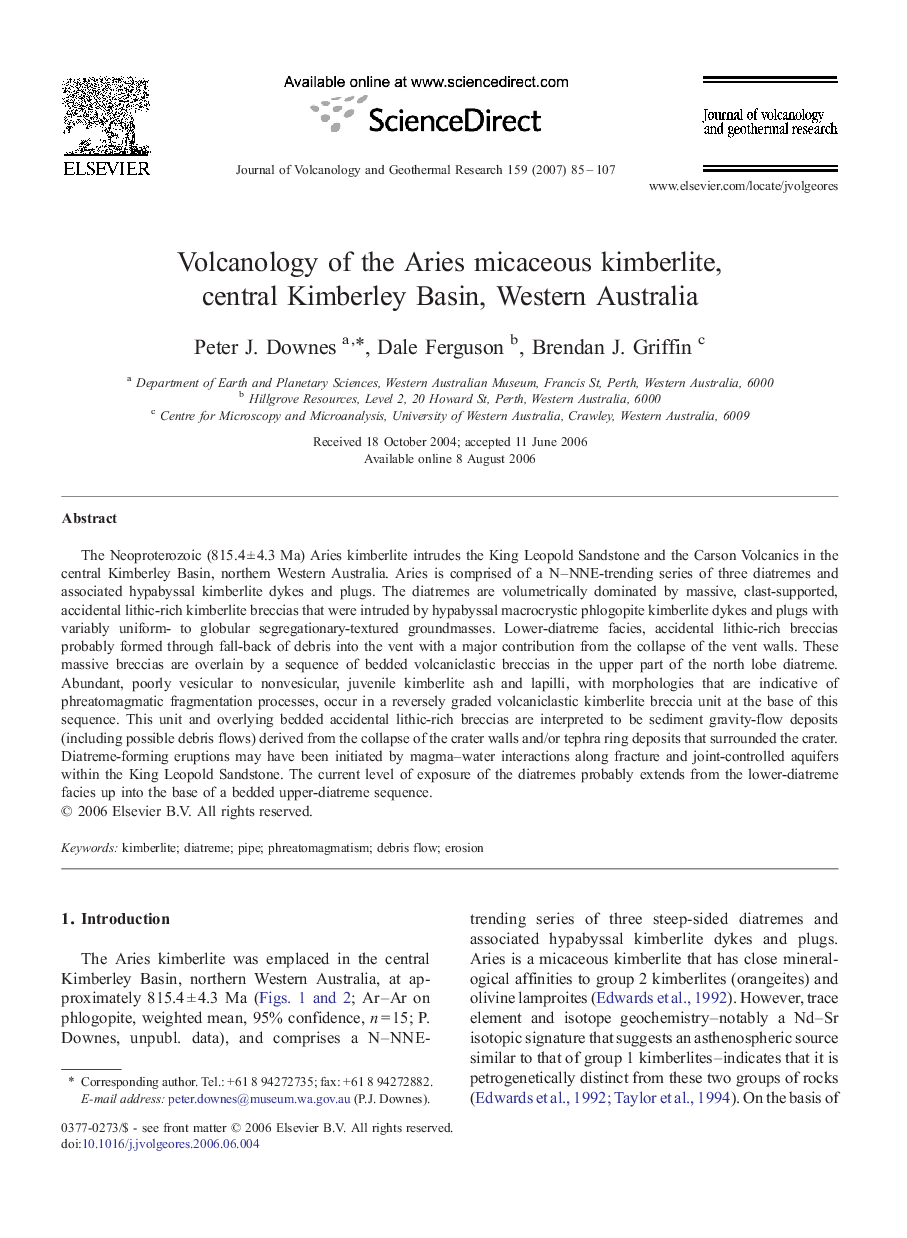| Article ID | Journal | Published Year | Pages | File Type |
|---|---|---|---|---|
| 4714109 | Journal of Volcanology and Geothermal Research | 2007 | 23 Pages |
The Neoproterozoic (815.4 ± 4.3 Ma) Aries kimberlite intrudes the King Leopold Sandstone and the Carson Volcanics in the central Kimberley Basin, northern Western Australia. Aries is comprised of a N–NNE-trending series of three diatremes and associated hypabyssal kimberlite dykes and plugs. The diatremes are volumetrically dominated by massive, clast-supported, accidental lithic-rich kimberlite breccias that were intruded by hypabyssal macrocrystic phlogopite kimberlite dykes and plugs with variably uniform- to globular segregationary-textured groundmasses. Lower-diatreme facies, accidental lithic-rich breccias probably formed through fall-back of debris into the vent with a major contribution from the collapse of the vent walls. These massive breccias are overlain by a sequence of bedded volcaniclastic breccias in the upper part of the north lobe diatreme. Abundant, poorly vesicular to nonvesicular, juvenile kimberlite ash and lapilli, with morphologies that are indicative of phreatomagmatic fragmentation processes, occur in a reversely graded volcaniclastic kimberlite breccia unit at the base of this sequence. This unit and overlying bedded accidental lithic-rich breccias are interpreted to be sediment gravity-flow deposits (including possible debris flows) derived from the collapse of the crater walls and/or tephra ring deposits that surrounded the crater. Diatreme-forming eruptions may have been initiated by magma–water interactions along fracture and joint-controlled aquifers within the King Leopold Sandstone. The current level of exposure of the diatremes probably extends from the lower-diatreme facies up into the base of a bedded upper-diatreme sequence.
